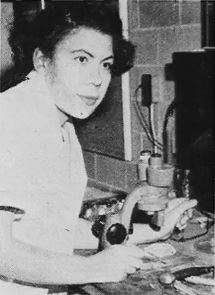Margaret S. Collins
| Margaret S. Collins | |
|---|---|
| Born |
1922 Institute, West Virginia |
| Died |
April 27, 1996 Cayman Islands |
| Occupation | zoologist |

Margaret James Strickland Collins (1922 – April 27, 1996) was an African-American zoologist, specializing in the study of termites. Collins was responsible, together with her colleague David Nickle, for identifying a new species, the Neotermes luykxi (the Florida dampwood termite).[1][2]
Life and work
Collins was born in 1922 in Institute, West Virginia. She started college at age fourteen and earned a Bachelor of Science degree in biology from West Virginia State University in 1943.[1] She earned a Doctor of Philosophy degree from the University of Chicago in 1950. Her PhD work focused on zoology and her mentor was Alfred E. Emerson.[1] She taught at Florida A&M University and at Howard University. Collins did extensive field work in North and South America, specializing in the insects of Guyana and Florida. From the late 1970s through 1996, Collins was a research associate in the Smithsonian's National Museum of Natural History, Department of Entomology.[3] Her primary area of study was termites of the Caribbean.[3][4]
Collins died April 27, 1996, during a research trip to the Cayman Islands.[1][5]
Published works
- Collins, M. S., Wainer, I. W., & Bremner, T. A. (1981). Science and the Question of Human Equality. Boulder, Colo.: Westview Press. ISBN 9780891589525
Further reading
- Warren, Wini. Black Women Scientists in the United States. Bloomington: Indiana University Press, 1999. Pages 52–65. ISBN 9780253336033
References
- 1 2 3 4 Carey, Charles W. (2008). African Americans in Science: An Encyclopedia of People and Progress. Santa Barbara, Calif.: ABC-CLIO. pp. 51–52. ISBN 9781851099986.
- ↑ "Florida dampwood termites". Featured Creatures. University of Florida.
- 1 2 "SIA Acc. 01-038, National Museum of Natural History (U.S.) Dept. of Entomology, Curatorial Records, 1959-1996". Smithsonian Institution Archives. Retrieved February 24, 2015.
- ↑ Staff (February 5, 1959). "Studies Termites". Jet. 15 (14). p. 25. Retrieved 2016-02-01.
- ↑ "Termite expert Margaret Collins dies during trip.". Washington Post. May 5, 1996. Retrieved January 29, 2016.